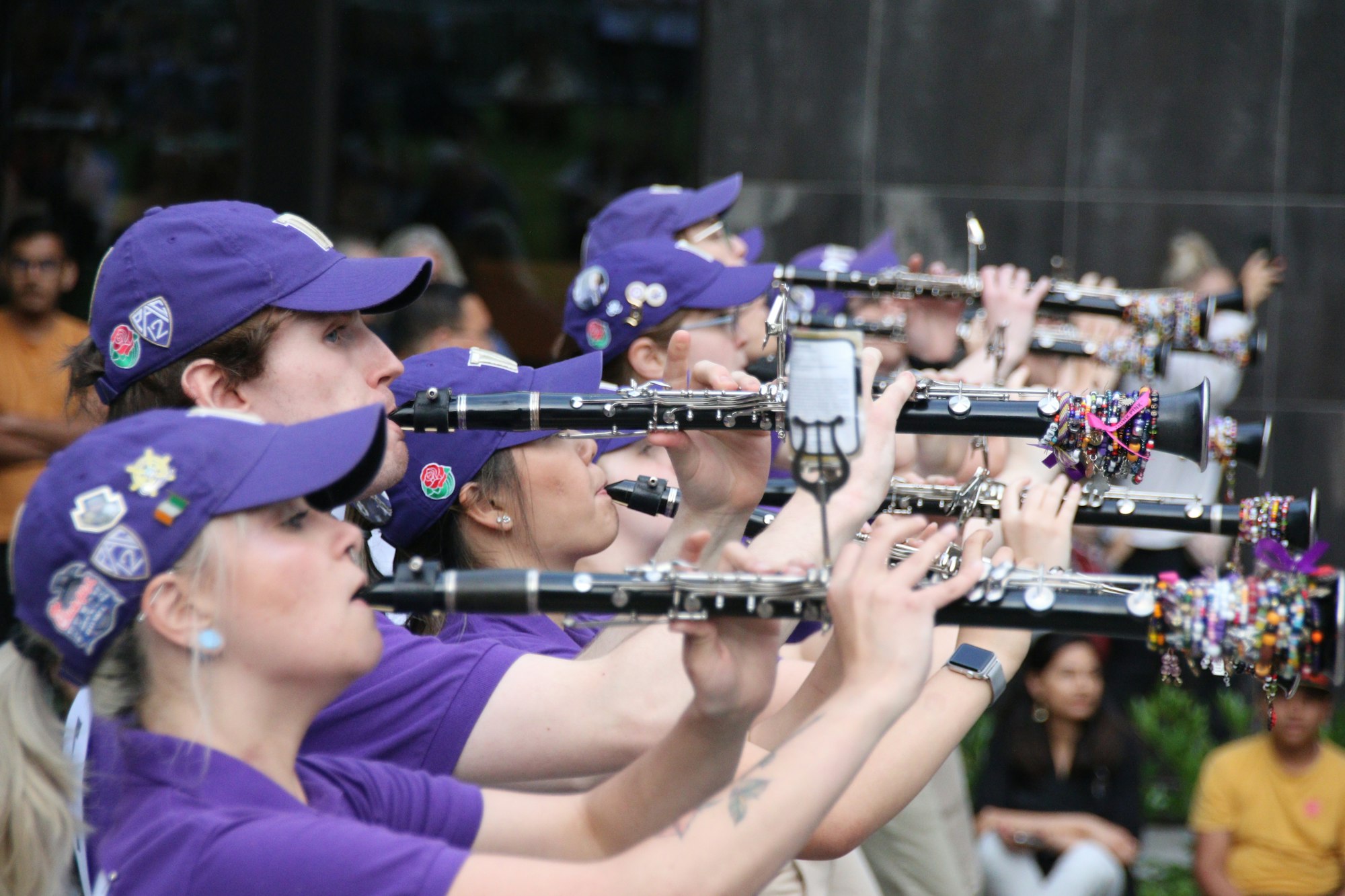Marching Band Needs Are Sweet Music to Business
Strike up the band! Before you head out to your local version of ‘Friday Night Lights’ and/or go to cheer on the alma mater on Saturday, consider what it takes to put together a marching band. Some of the news might be, well, striking.
It doesn’t matter if it’s the pomp and pageantry of playing in front of 100,000 fans packed into a ginormous stadium, or putting on a show for a few hundred people gathered in a sleepy hamlet in Somewhere, U.S.A., Marching bands bring sizzle and entertainment to the game, parade, festival, or event. Each week, from high schools to colleges, and even the military, there are many thousands of bands taking part in the festivities.
It takes money and other resources. One example of what is needed to make a marching band happen is, depending on the complexity of the uniform, marching band uniforms can cost as much as $500 per band member. Factor in the estimate that the lifespan of a band uniform is usually 8-10 years, and you see it isn’t inexpensive to look sharp, while you play sharp.
Many state and local governments, along with various governing bodies in education, have mandated that parents, booster clubs, and the bands themselves are required to contribute and raise funding. This expectation is in place and has been reinforced in growing instances in recent years. Still, despite the rise in the “pay to play” model, a majority of state, local, and education agencies still contribute varying dollars towards band budgets.

Lincoln County High School, in Fayetteville, TN, Go Falcons!, is one example of a partnership between band members, boosters, as well as department of education, combining resources to benefit a band.
Earlier this month, Sonja Isger, in myPalmBeachPost.com, shared a stark reminder that organizing, managing, and funding a band is a rewarding, but complex enterprise, ‘The Road to the Macy’s parade’, Park Vista band: Duct tape, sweat, heartbreak on the road to Macy’s parade. Duct tape, donors, electrical tape, sunburn, sweat equity, and tears are all terms familiar to most bands.
The expenses to support marching bands aren’t limited to high schools. As noted in The Mercury, back in August (more on August, later), ‘KSU marching band buys $92K in new instruments’, “The band purchased 22 trumpets, eight trombones, 19 clarinets, 18 piccolos, 22 alto saxophones and 22 tenor saxes for about $92,000 from musical instrument maker Conn-Selmer.” How much does your alma mater put into that marching band you enjoy at halftime?
Budgets for high school marching bands can go into the hundreds of $thousands. Meanwhile, for some college bands, the number can reach the $millions. Of course, those aren’t the only marching bands out there.
Each branch of the military has numerous bands, to include the marching variety, which participate in inaugurations, funerals, parades, and other performances. And they aren’t cheap. For example, back in 2016, spending on United States Air Force bands carried a pricetag of roughly $10 million, without including costs associated with pay, and other benefits, provided to the band members. The same year, The New York Times ran a story, in part, including a figure of $437 million to operate bands, across the U.S. military. So, yes, similar to bands elsewhere, funding of military bands has come under scrutiny.
Our investigation, into public sector purchasing related to investment in bands, proves that many are still requesting and purchasing band-related equipment and support services. As with Lincoln County, we often see where the public sector is willing to supplement the funds generated by other interests, but not take on 100% of the funding.
Over the past twelve months, backwards looking at data in the U.S., and we included Canada, there have been 1,287 such bids / RFPs for “music”. Not surprisingly, with most schools starting session in late August or early September, August ‘18 was the month with the most solicitations (168) in a single month over the past year.
We identified another interesting trend. Upon further researching and analyzing the data from U.S. federal and state and local entities, along with those in Canada, there have been substantially more requests over the past six months than the previous six months.
Sep ‘17 – Feb ‘18: 487 bids / RFPs
Mar ‘18 – Aug ‘18: 807 bids / RFPs
RELATED BIDS/RFPs
So, is all of this worth it? If you’ve ever played in a marching band, you likely know the answer. To get some firsthand feedback, I asked a couple BidPrime folks about their experiences being a part of a marching band.
Braedon Avants – “Being part of marching band taught me how to work as a group toward a shared goal. Developing the skills to perform as a cohesive unit took cooperation and discipline, and it highlighted the importance of clear and effective communication. I was able to travel, expand my social network, and grow as a musician during my time in marching band programs.”
Rick Jennings – “Without my experience in marching band, I might have not been able to pursue my music career and related hobbies. I truly believe that my days in band helped to fuel my passions and enriched my education, far beyond just the music.”
Thumbs up to the band members, directors, administrators, supporters, agencies, and businesses who do their part to make it all happen! We’ve done our best to tell a part of the story, but as Hans Christian Andersen is quoted, “Where words fail, music speaks.” Keep that cadence, cover down, and keep playing that sweet, sweet music!
For details on relevant bids / RFPs, and to review the related bid documents, please call us at 888.808.5356 or visit BidPrime.
